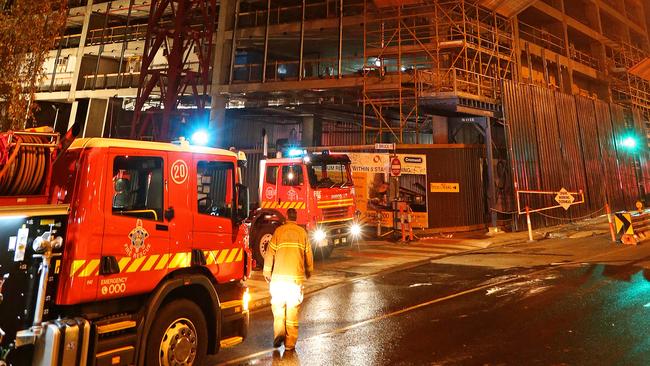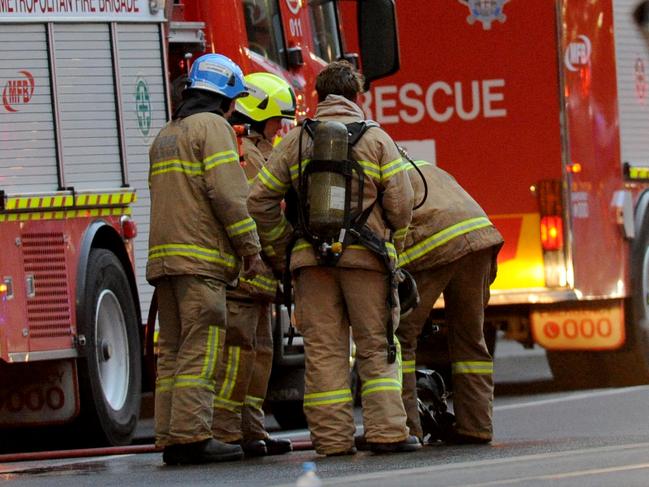Alarm over issues with fireproof materials, stable walls and escape routes in Victorian apartment blocks
A report has lifted the lid on the shocking rate of fire protection defects in Victorian apartments, raising concerns the system is “effectively broken”.

Victoria
Don't miss out on the headlines from Victoria. Followed categories will be added to My News.
Fire protection defects in Victorian apartment buildings are so common that industry figures believe the system is “effectively broken”, according to a new report.
Research from the Victorian Building Authority and Deakin University has detailed alarming concerns into how builders are installing passive fire protection (PFP).
Active fire protection involves sprinklers and smoke alarms while passive protection involves using fireproof materials, stable walls and escape routes.
Both are required under Victorian law but the research found evidence of regular flaws with passive safety in larger projects.

The VBA inspected residential construction sites for these issues between July 2018 and September 2021 and found 134 buildings at risk of failing standards.
Lead researcher Nicole Johnston also interviewed industry experts who sounded the alarm on defects.
“Many practitioners were of the view that the level of noncompliance was so great that the PFP system was effectively broken,” the report found.
“The frustration of constantly witnessing high levels of noncompliance over years with little effective change was highlighted throughout.”
One engineer was so alarmed about defects they called for a halt on projects until there was major reform.
“I think we’ve reached a point where it is so bad, we should put a pause button on allowing this construction, full stop,” they told researchers.
“The problem with passive fire protection is that it’s there to protect load-bearing elements.
“So, if you have a three-storey timber-framed building that has a small fire, and it breaks through the fire-rated skin then the whole structure comes down.
“Frankly, I’m surprised we haven’t had one of those fires yet but we will.”
Ms Johnston said the evidence suggested a large number of buildings in the state were likely to have defects, including complexes built in the last 20 years.
But Ms Johnston said she was concerned the industry still “wasn’t there yet” in training installers and oversight, calling on the government to consider a registration scheme for professionals similar to that in Queensland.
“Some of the big players are doing it really well,” she said.
“The problem is, we don’t know how many have these protocols in place, and are doing the right thing, and how many are not.
“Smaller builders do not have the infrastructure or the resources to make sure that someone coming in … is doing it correctly and that’s where the real concern is.”
About a third of the risks found by the VBA were about “fire resistance and stability” while other notable issues were escape routes and features that kept fires contained.
State Building Surveyor Andrew Cialini said there was work underway to improve compliance.
“The information and intelligence gathered through this research is assisting the VBA proactive inspections team to identify possible areas of building and plumbing noncompliance before they become an issue for homeowners,” he said.
A state government spokesman said they were still reforming the building industry to address systemic issues.
“This includes enabling the creation of a new registration class covering people responsible for carrying out fire safety installation and maintenance work,” he said.




